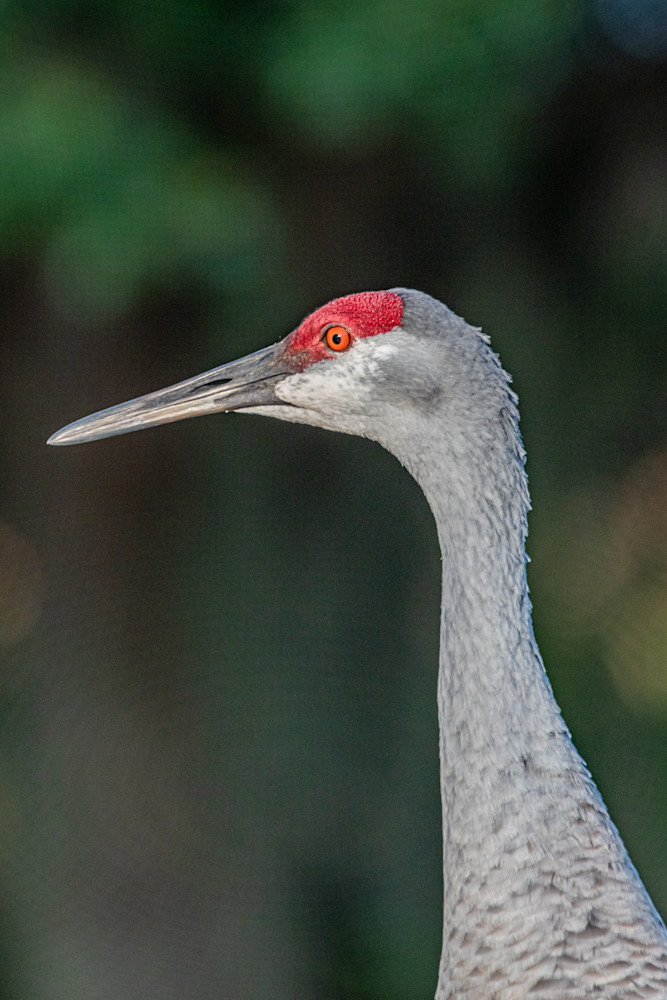A sandhill crane (Antigone canadensis) is a large and elegant bird known for its distinctive appearance and loud, trumpeting calls. Here's a description of its profile:
**Size and Build:**
Sandhill cranes are large birds, standing about 3 to 4 feet tall. They have a wingspan of approximately 6 to 7 feet. Their bodies are characterized by a long neck and legs, making them well-adapted for wading in wetland habitats. The overall build is slender and graceful.
**Plumage:**
The plumage of the sandhill crane is primarily gray, with a rusty-brown wash on their cheeks and a distinctive red crown on their foreheads. The feathers on their bodies are often a mix of gray and brown tones, providing effective camouflage in their natural habitats. The coloration may vary slightly among the different subspecies.
**Head and Neck:**
The head of the sandhill crane is relatively small, and it features a patch of bare, red skin on the crown. The eyes are relatively large and positioned on the sides of the head, providing the bird with a wide field of view. Their long neck is typically held straight in flight and extends gracefully when foraging.
**Bill:**
The bill of a sandhill crane is long and pointed, adapted for probing in mud and shallow water for food. It is typically dark in color, often appearing black or dark gray.
**Legs and Feet:**
Sandhill cranes have long legs, which are black or dark gray. Their feet are large, with elongated toes that are adapted for walking in marshy areas and wading in shallow waters.
**Voice:**
One of the most distinctive features of sandhill cranes is their trumpeting calls. The calls are loud, resonant, and can be heard over long distances. These vocalizations are a significant part of their communication, used for maintaining contact with their mate and offspring, as well as signaling their presence in the habitat.
**Habitat:**
Sandhill cranes inhabit a variety of wetland habitats, including marshes, ponds, and grasslands. They are often found in open landscapes, where they forage for insects, small mammals, and plant matter.
The sandhill crane's profile reflects both its physical adaptations for its habitat and its unique aesthetic characteristics, making it a captivating bird to observe in the wild.














